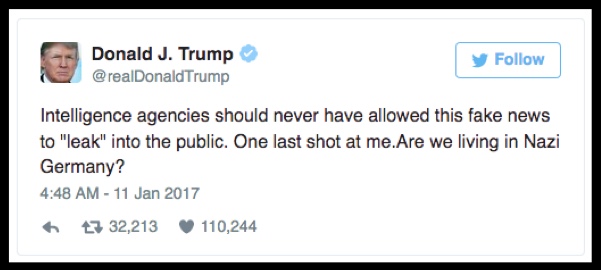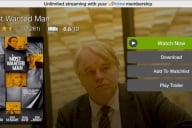You have /5 articles left.
Sign up for a free account or log in.
What was perhaps the largest fake news fraud of the 2016 election was perpetrated by a recent, 23 year old, liberal arts graduate. And by his own admission, he did it for the money, rather than out of any strong political convictions. His fake news articles generated dollars and fostered discord.
Last week, two days before the Trump inauguration, the New York Times (18 Jan 2017) unveiled the story of Cameron Harris, a May 2017 graduate of Davidson College in North Carolina and his fake news site, The Christian Times Newspaper. (The Christian Times Newspaper web site is no longer available.) Mr. Harris was motivated, he told the NY Times, by a need for cash rather than an interest in creating chaos: “I spent the money on student loans, car payments, and rent.”
And Mr. Harris earned a lot of cash from his foray into fake news. His $5 investment to reactive the expired URL for The Christian Times Newspaper ultimately generated more than $100,000 from click through ads via Google and other placement services.
Beginning with a fake report in June that Hilary Clinton blamed the May 2016 shooting death of a gorilla at the Cincinnati Zoo on racism, Mr. Harris continued to post additional fake stories that ultimately led to his truly big hit on September 30th when the online Christian Times Newspaper proclaimed that “tens of thousands of fraudulent Clinton votes were found in an Ohio warehouse.” Following the report about ballot fraud in Ohio, the Christian Times Newspaper also posted fake news stories about Hillary Clinton filing for divorce, and Bill Clinton’s involvement in an underage sex ring.

The fake news report about Clinton ballots generated more than 6 million hits. Election officials in Ohio launched an official investigation and Ohio’s Secretary of State issued a formal denial.
Among the many big lies of the 2016 election, Mr. Cameron’s story about bad ballots in Ohio ranks among the biggest and most widely read. The NY Times reports that by the end of the 2016 election cycle “eight of [Mr. Cameron’s] stories would merit explicit debunking by Snopes.com, the myth-busting site, but none would top the performance of the [Ohio] ballot box fantasy.”
And what does Mr. Cameron say now about his entrepreneurial adventure in fake news? The NY Times report suggests some surprise and remorse, but also some arrogance: “[I was surprised] at how easily people would believe it. It was also almost like a sociological experiment.”
.jpeg)
Last week Mr. Harris issued an apology, although it was laden with the sophisticated spin one might expect from a seasoned politician: “I apologize to those disappointed by my actions, and my wish is that I will be allowed to contribute my informed experience to a larger dialogue about how Americans approach the media, tough issues, and the manner in which we, collectively, will inform our decisions going forward.”
So what are we to make of the liberal arts graduate who was responsible for so much fake news in the past election? Did his liberal arts education “not take?” Did he succumb to the dark side because of money problems? Or have hard facts and the real truth now fully descended into the world of “truthiness” (things you wish or believe might be true) first described by Stephen Colbert some years ago?
Of course Davidson College, Mr. Jones’ alma mater, is not responsible for his dishonest deeds. Indeed, The Charlotte Observer reports that there is lots of anger and angst is now directed at Mr. Harris from Davidson students, faculty, and alumni. In an email to faculty, Davidson president Carol Quillen wrote that “I hear and share your anger” about the role of a Davidson grad in creating fake news during the recent election.
[SIDEBAR: A very different story about the impact of a liberal arts education emerged last fall in the Washington Post article about Derek Black, a rising young star in the white nationalist movement. His experience at and engagement with his fellow students at the New College in Florida (my alma mater!), ultimately led Mr. Black to renounce his prior (and very public) support for white nationalism.]
Given the truly unprecedented events that were part of fall 2016 election – Trump’s tweets, fake news, the WikiLeaks posting of Clinton campaign emails, Russian efforts to influence the election, good and bad strategy decisions by the Clinton campaign, and much, much more – we cannot effectively parse out the impact of any one of these or other factors on the outcome of the election. But we can agree that so much of the election experience this past fall was – to use the now overused term – clearly unprecedented in the history of American presidential elections.
And what of Mr. Harris? Last week his employer, Maryland Republican Delegate David Vogt III, fired Mr. Harris “on the spot” when he learned of his young aide’s prominent role in generating fake news during the fall election. Given his public apology, maybe Mr. Harris will now take the seasoned politician’s “time out” to figure out how to repair his reputation and his career.
And yet I suspect that somewhere there are those who will applaud what Mr. Harris did, how he did it, and how he made big money (over $100K) doing it. There’s ample ambiguity (an apology “to those to those disappointed by my actions”) in Mr. Harris’s “wish is that I will be allowed to contribute my informed experience.” Interestingly, the NY Times reports that Mr. Harris is now trying “to build a political consulting business,” presumably based on his deplorable (yet successful) fake news experience.
Let's be clear here: Mr. Harris, several months out of college with his new liberal arts degree, quickly became a seasoned and successful (and digital) practitioner of the Art of the Big Lie: “If you tell a lie big enough and keep repeating it, people will eventually come to believe it.”
For the record, the source of the well-known the Big Lie quote is the Nazi Minister of Propaganda, Joseph Goebbels. And I cite Goebbels with great caution and concern, even as it was President-elect Trump who, on January 11th, vented his anger at the nation’s intelligence agencies with a reference to Nazi Germany. Fake news, now supplemented by “alternative facts,” are the current iterations of the Big Lie.

Let us all pause for a few seconds. Let’s take a few deep breaths. And going forward, perhaps we can all take on as our mantra the words of the late scholar, ambassador, U.S. senator, and respected statesman Daniel Patrick Moynihan: “Everyone is entitled to his own opinion, but not his own facts.”
.jpeg)
Follow me on Twitter: @DigialTweed






